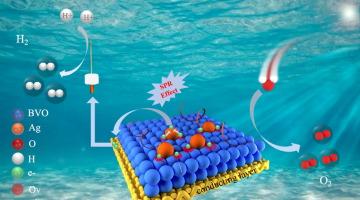Integrative epitranscriptomic and transcriptomic characterization in human colorectal cancer
IF 13
1区 综合性期刊
Q1 MULTIDISCIPLINARY SCIENCES
引用次数: 0
Abstract
Introduction
Despite significant progress in understanding the molecular basis of colorectal cancer (CRC), the precise mechanisms driving its development and progression remain poorly defined. This gap limits the identification of novel therapeutic targets and the development of effective early detection methods. N6-methyladenosine (m6A) has merged as a key role in CRC pathogenesis. But research on mRNA methylation in CRC remains sparse.Objectives
We aimed to address the roles of m6A modifications in CRC and to understand how mRNA methylation contributes to CRC development and progression.Methods
We obtained a comprehensive mapping of altered m6 peaks within mRNAs using Methylated RNA Immunoprecipitation Sequencing (MeRIP-seq) from 34 CRC samples and 34 adjacent normal tissue samples and dissect molecular mechanisms of identified key CRC gene(s). By integrating these data, we identified differentially expressed mRNAs with altered m6A levels. Further analysis identified 119 overlapping peaks with both significantly altered RNA methylation and expression levels. Finally, we analyzed the relationship between m6A-regulated gene expression and Immune infiltrates using CRC patient-derived PBMC samples. Additionally, we established a subcutaneous xenograft tumor model to explore the role of SIM2 in CRC progression.Results
Our comprehensive analysis of 68 fresh-frozen CRC samples identified 119 overlapping m6A peaks across 77 genes, classified based on m6A and mRNA expression changes. Survival analyses revealed a signature of m6A-modified genes with prognostic potential. These methylated genes were significant associated with immune cell profiles in the tumor microenvironment and immune checkpoints regulation, highlighting m6A as a promising immunotherapeutic target for CRC. SIM2 emerged as a key candidate, exhibiting elevated m6A and RNA expression levels in tumors and Macrophage M2 cells. NTMT1 (a writer) and YTHDF1 (a reader) were identified as pivotal regulators of m6A modifications in the 5′-UTR of SIM2 mRNA, emphasizing their role in CRC progression. Silencing methylated SIM2 significantly suppressed tumor growth, suggesting its potential as a therapeutic target.Conclusion
Our integrative analyses provide a valuable resource for unraveling the molecular landscape of CRC. These finding offer new insight for advancing diagnostic precision and refining prognostic and therapeutic strategies for CRC.

人类结直肠癌的综合表转录组学和转录组学特征
尽管在了解结直肠癌(CRC)的分子基础方面取得了重大进展,但驱动其发展和进展的确切机制仍然不清楚。这一差距限制了新的治疗靶点的识别和有效的早期检测方法的发展。n6 -甲基腺苷(m6A)在结直肠癌发病机制中起着关键作用。但是对CRC中mRNA甲基化的研究仍然很少。目的研究m6A修饰在结直肠癌中的作用,并了解mRNA甲基化如何促进结直肠癌的发生和进展。方法采用甲基化RNA免疫沉淀测序(MeRIP-seq)技术,对34例结直肠癌样本和34例邻近正常组织样本的mrna中m6峰的变化进行了全面定位,并分析了鉴定出的结直肠癌关键基因的分子机制。通过整合这些数据,我们确定了m6A水平改变的差异表达mrna。进一步分析发现了119个重叠峰,RNA甲基化和表达水平都发生了显著改变。最后,我们利用CRC患者来源的PBMC样本分析了m6a调控基因表达与免疫浸润之间的关系。此外,我们建立了皮下异种移植肿瘤模型,以探讨SIM2在CRC进展中的作用。结果我们对68份新鲜冷冻CRC样本进行综合分析,鉴定出119个重叠的m6A峰,涉及77个基因,并根据m6A和mRNA表达变化进行分类。生存分析显示m6a修饰基因具有预后潜力。这些甲基化基因与肿瘤微环境中的免疫细胞谱和免疫检查点调节显著相关,突出表明m6A是CRC有希望的免疫治疗靶点。SIM2在肿瘤和巨噬细胞M2中表现出升高的m6A和RNA表达水平,成为关键的候选基因。NTMT1(写入者)和YTHDF1(读取者)被确定为SIM2 mRNA 5 ' -UTR中m6A修饰的关键调节因子,强调了它们在CRC进展中的作用。沉默甲基化的SIM2显著抑制肿瘤生长,提示其作为治疗靶点的潜力。结论我们的综合分析为揭示结直肠癌的分子格局提供了宝贵的资源。这些发现为提高CRC的诊断精度和改善预后和治疗策略提供了新的见解。
本文章由计算机程序翻译,如有差异,请以英文原文为准。
求助全文
约1分钟内获得全文
求助全文
来源期刊

Journal of Advanced Research
Multidisciplinary-Multidisciplinary
CiteScore
21.60
自引率
0.90%
发文量
280
审稿时长
12 weeks
期刊介绍:
Journal of Advanced Research (J. Adv. Res.) is an applied/natural sciences, peer-reviewed journal that focuses on interdisciplinary research. The journal aims to contribute to applied research and knowledge worldwide through the publication of original and high-quality research articles in the fields of Medicine, Pharmaceutical Sciences, Dentistry, Physical Therapy, Veterinary Medicine, and Basic and Biological Sciences.
The following abstracting and indexing services cover the Journal of Advanced Research: PubMed/Medline, Essential Science Indicators, Web of Science, Scopus, PubMed Central, PubMed, Science Citation Index Expanded, Directory of Open Access Journals (DOAJ), and INSPEC.
 求助内容:
求助内容: 应助结果提醒方式:
应助结果提醒方式:


